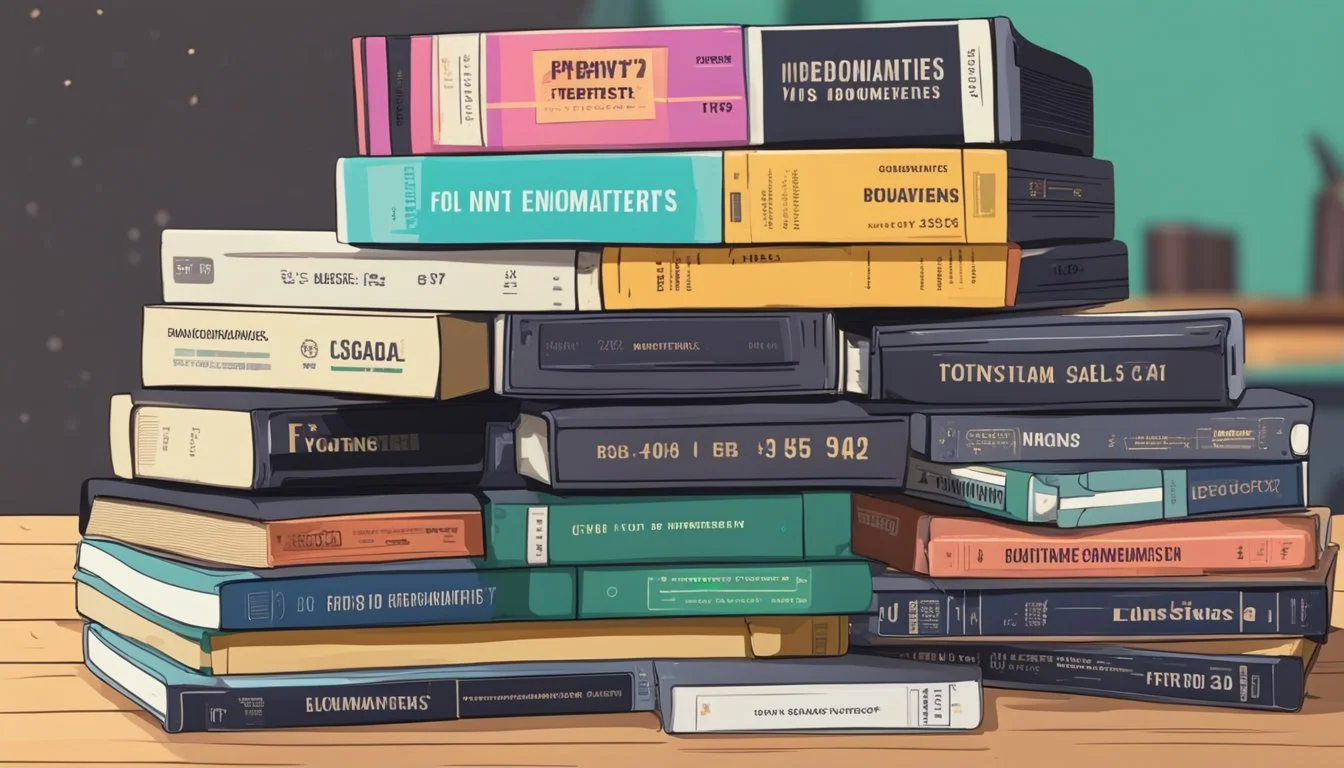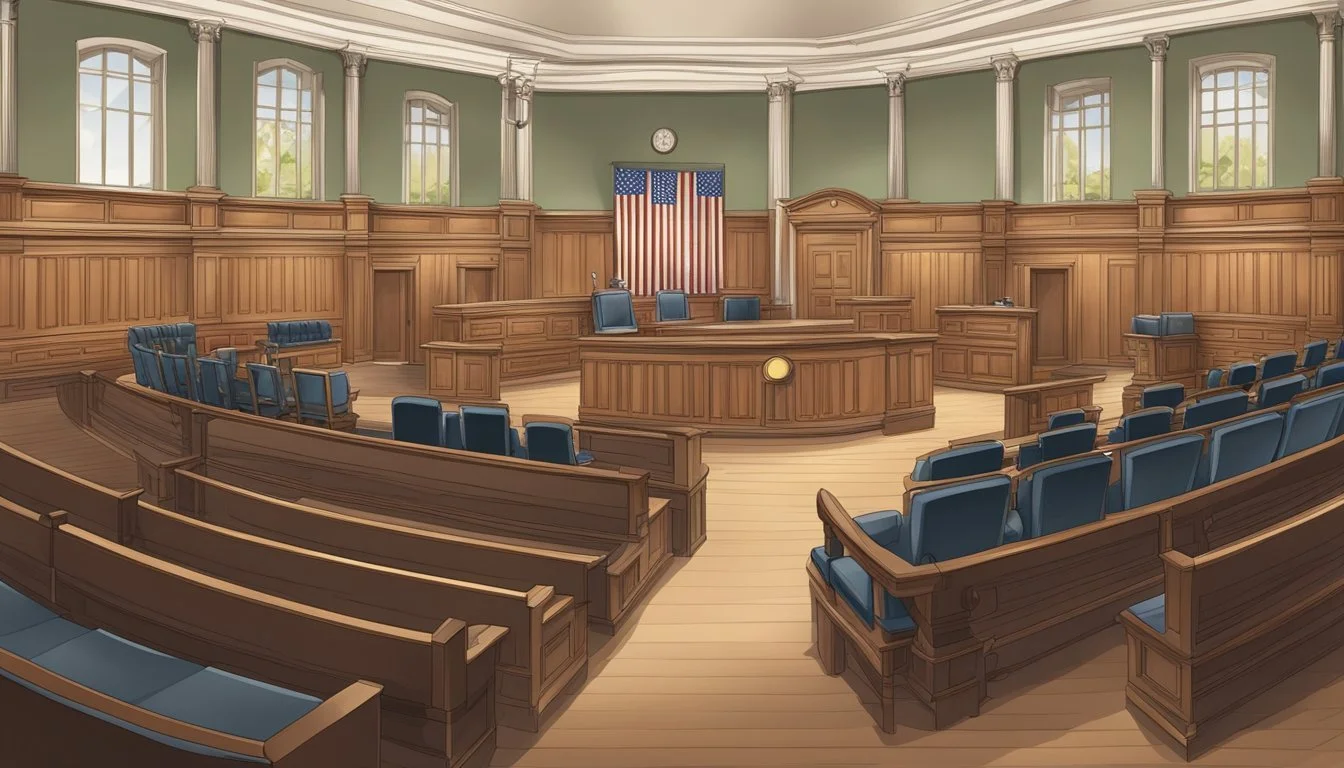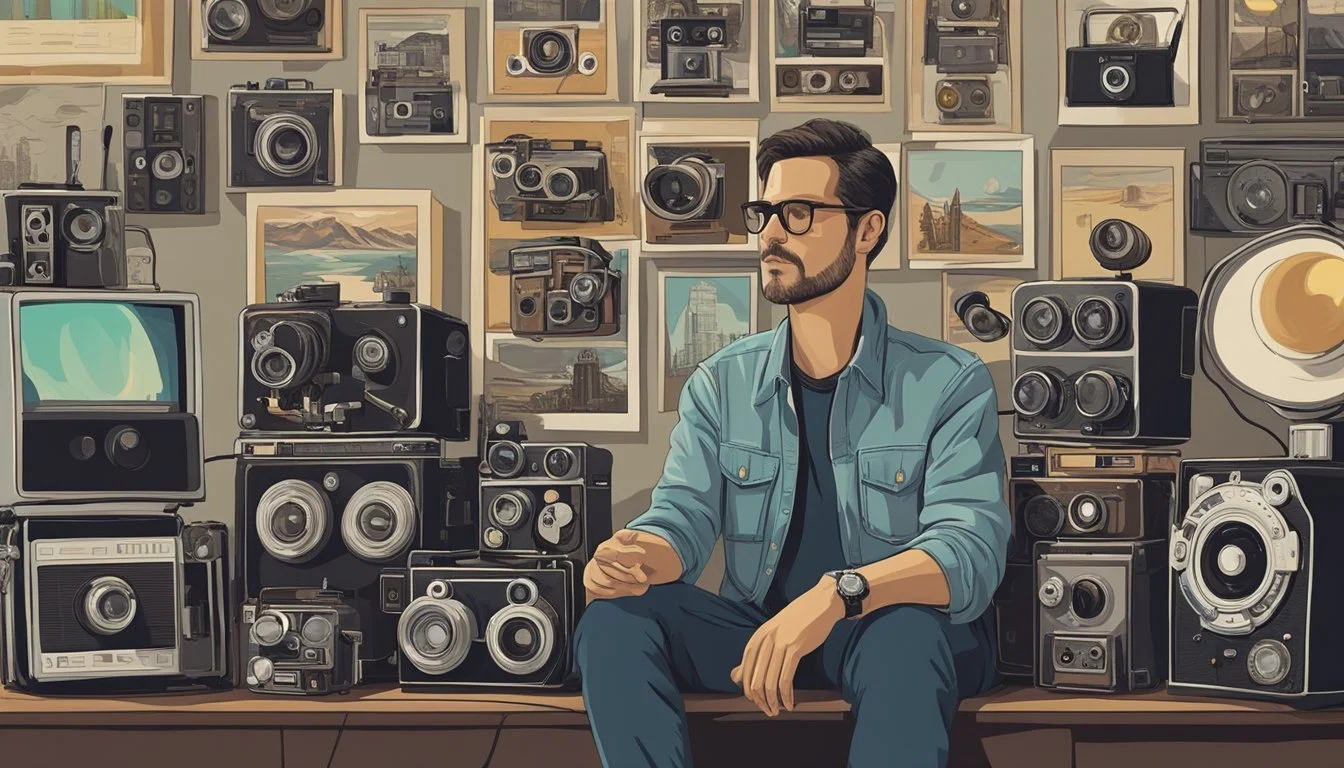Top Documentaries of 1995
Essential Viewing from a Landmark Year in Film
The year 1995 marked a significant period in documentary filmmaking, with numerous compelling and influential works released. These documentaries covered a wide range of subjects, from social issues to music, sports, and politics, providing viewers with thought-provoking insights into various aspects of society and culture.
Several documentaries from 1995 continue to be regarded as classics in the genre, influencing future filmmakers and shaping public discourse on important topics. The films produced during this year showcased innovative storytelling techniques, in-depth research, and powerful narratives that captivated audiences and critics alike. As we examine the top documentaries of 1995, we gain a deeper understanding of the issues and events that defined that era.
1) Apollo 13: To the Edge and Back (1994)
This gripping documentary recounts the harrowing events of NASA's Apollo 13 mission. Directed by Noel Buckner and Rob Whittlesey, it offers a detailed look at the near-disaster that unfolded 250,000 miles from Earth.
The film features interviews with key figures, including astronauts and mission control personnel. It provides a comprehensive account of the oxygen tank explosion that threatened the lives of the crew and the ingenious solutions devised to bring them home safely.
Archival footage and reenactments bring the tense moments to life, showcasing the teamwork and problem-solving skills that turned potential tragedy into triumph. The documentary captures the era's space exploration fervor and the risks involved in pushing the boundaries of human achievement.
"Apollo 13: To the Edge and Back" serves as a testament to human resilience and ingenuity in the face of extreme adversity. It offers viewers a behind-the-scenes look at one of NASA's finest hours.
2) Anne Frank Remembered (1995)
Anne Frank Remembered is a powerful documentary that sheds new light on the life of Anne Frank. Directed by Jon Blair, the film offers a comprehensive look at the young diarist's story through interviews, rare footage, and photographs.
The documentary features narration by Kenneth Branagh and Glenn Close, who bring Anne's words to life. It includes interviews with Miep Gies, the woman who helped hide the Frank family and preserved Anne's diary after their capture.
Blair's film incorporates unique elements such as a rare home movie of Anne Frank, providing viewers with a glimpse of her personality beyond her written words. The documentary also explores the historical context of the Frank family's experiences during World War II.
Anne Frank Remembered received critical acclaim upon its release. It won the Academy Award for Best Documentary Feature in 1996, with Miep Gies accompanying Blair to accept the award.
The film's strength lies in its ability to humanize Anne Frank, presenting her as a vibrant young girl rather than just a symbol of the Holocaust. It offers a poignant look at her life, dreams, and the tragic circumstances that led to her untimely death.
3) Crumb
"Crumb" (1994) offers an intimate portrait of underground cartoonist Robert Crumb and his family. Directed by Terry Zwigoff, the documentary explores Crumb's controversial art and complex personal life.
The film delves into Crumb's artistic process, showcasing his distinctive drawing style and provocative subject matter. It provides insights into his upbringing and relationships with his brothers Charles and Maxon.
Zwigoff's unflinching approach captures the eccentricities and psychological struggles of the Crumb family. The documentary features candid interviews and archival footage, painting a nuanced picture of the artist's world.
"Crumb" received widespread critical acclaim upon its release. It won numerous awards and is considered a landmark in documentary filmmaking. The film's honest portrayal of its subject matter set a new standard for biographical documentaries.
4) Unzipped
Unzipped (1995) offers a captivating glimpse into the world of high fashion. This documentary follows renowned designer Isaac Mizrahi as he prepares for his Fall 1994 collection.
Director Douglas Keeve captures the creative process behind Mizrahi's designs, from conceptualization to the runway show. The film showcases the frenetic energy and pressure of the fashion industry.
Unzipped features appearances by supermodels Cindy Crawford, Naomi Campbell, and Linda Evangelista. Their presence adds star power and authenticity to the documentary's portrayal of the fashion world.
Shot primarily in black and white, the film employs a cinema verité style. This approach allows viewers to feel immersed in the behind-the-scenes action of Mizrahi's studio and fashion shows.
The documentary received critical acclaim for its intimate portrayal of the designer's creative process. It offers a rare, unfiltered look at the ups and downs of bringing a fashion collection to life.
5) Libera Nos: In the Name of the Law (1995)
Libera Nos: In the Name of the Law is a powerful Italian documentary directed by Marco Bellocchio. The film explores the complex relationship between the Sicilian Mafia and the Italian justice system.
Bellocchio's documentary sheds light on the challenges faced by law enforcement and judicial officials in their fight against organized crime. It features interviews with judges, prosecutors, and police officers who risk their lives daily to uphold the law.
The film provides a sobering look at the pervasive influence of the Mafia in Sicily. It examines how criminal organizations infiltrate various aspects of society, from politics to business.
Libera Nos: In the Name of the Law received critical acclaim for its unflinching portrayal of a deeply rooted societal issue. The documentary's raw and honest approach resonated with audiences and critics alike.
More information on Libera Nos: In the Name of the Law
6) The Celluloid Closet
The Celluloid Closet (1995) examines the portrayal of LGBTQ+ characters in American cinema. Directed by Rob Epstein and Jeffrey Friedman, this documentary explores how Hollywood has depicted homosexuality throughout film history.
Based on Vito Russo's 1981 book of the same name, the film features clips from various movies spanning decades. It analyzes both subtle and overt representations of gay and lesbian characters on screen.
The documentary includes interviews with actors, filmmakers, and writers who provide insights into these portrayals. Notable participants include Tom Hanks, Susan Sarandon, and Gore Vidal.
Narrated by Lily Tomlin, The Celluloid Closet sheds light on the evolution of LGBTQ+ representation in film. It discusses stereotypes, coded language, and the impact of these depictions on society and the LGBTQ+ community.
The film received critical acclaim for its thorough examination of this often-overlooked aspect of cinema history. It won numerous awards, including the GLAAD Media Award for Outstanding Documentary.
7) The Shadow of Hate (1995)
"The Shadow of Hate" is a powerful documentary directed by Charles Guggenheim. It explores the history of intolerance and discrimination in America, spanning from colonial times to the 20th century.
The film opens with a striking scene of 40,000 Ku Klux Klan members marching in Washington D.C. in 1925. This sets the tone for a sobering examination of prejudice and hate throughout American history.
Guggenheim's documentary covers various forms of discrimination, including racism, anti-Semitism, and xenophobia. It uses archival footage and photographs to illustrate key events and periods of intolerance.
The film was nominated for an Academy Award for Best Documentary Short. It serves as an educational tool, shedding light on dark chapters of American history that are often overlooked or minimized.
"The Shadow of Hate" remains relevant today, offering valuable insights into the roots and persistence of prejudice in society. Its unflinching portrayal of intolerance serves as a stark reminder of the ongoing struggle for equality and justice.
8) The Gate of Heavenly Peace (1995)
The Gate of Heavenly Peace is a documentary that examines the 1989 Tiananmen Square protests in Beijing, China. Directed by Richard Gordon and Carma Hinton, the film provides a comprehensive look at the events leading up to and following the government crackdown on June 4, 1989.
The documentary uses a combination of archival footage and interviews with various Chinese citizens. It features perspectives from students, workers, intellectuals, and government officials involved in or affected by the protests.
At three hours long, The Gate of Heavenly Peace offers an in-depth exploration of the complex political and social factors surrounding the Tiananmen Square events. The film aims to present a balanced view of the protests and their aftermath.
The documentary gained recognition for its thorough approach to a sensitive topic in recent Chinese history. It provides viewers with a nuanced understanding of the tensions between protesters and the government during this pivotal moment.
More information on The Gate of Heavenly Peace
9) Anne Frank's Holocaust
"Anne Frank Remembered" (1995) offers a poignant look at the life of Anne Frank, one of the most well-known victims of the Holocaust. Directed by Jon Blair, this documentary provides a comprehensive portrait of the young diarist.
The film incorporates rare archival footage and photographs to bring Anne's story to life. It features interviews with people who knew Anne, including her childhood friend Hanneli Goslar and Miep Gies, who helped hide the Frank family.
Kenneth Branagh narrates the documentary, lending his voice to Anne's words from her diary. The film also includes the only known video footage of Anne Frank, a brief clip from a 1941 wedding.
"Anne Frank Remembered" won an Academy Award for Best Documentary Feature. It offers viewers a deeper understanding of Anne's personality beyond her famous diary entries.
The documentary explores the historical context of the Holocaust and its impact on the Frank family. It provides insight into life in hiding and the ultimate fate of Anne and her loved ones.
10) Shooting Stars: A Weekend in Palm Springs
"Shooting Stars: A Weekend in Palm Springs" (1995) offers an intimate look at the glitz and glamour of Hollywood's favorite desert getaway. This documentary captures the essence of Palm Springs during a star-studded weekend event.
The film showcases the city's iconic mid-century modern architecture and lush golf courses. It features interviews with celebrities who frequent the area, providing insight into why Palm Springs remains a popular retreat for the rich and famous.
Viewers are treated to behind-the-scenes glimpses of exclusive parties and events. The documentary also explores the history of Palm Springs as a Hollywood hangout, dating back to the golden age of cinema.
The film highlights local attractions such as the Palm Springs Aerial Tramway and Joshua Tree National Park. It also touches on the area's Native American heritage and the influence of the Agua Caliente Band of Cahuilla Indians.
"Shooting Stars" presents a vibrant snapshot of Palm Springs in the mid-1990s. It serves as both a time capsule and a testament to the enduring allure of this desert oasis.
More information on Palm Springs
Cinematic Landscape of 1995
1995 marked a pivotal year in documentary filmmaking, with technological advancements and evolving storytelling techniques shaping the genre. Filmmakers explored diverse themes, pushing creative boundaries and capturing real-life stories in innovative ways.
Technological Advances
Digital video cameras gained popularity, offering filmmakers more flexibility and cost-effective production options. This shift allowed for longer shooting times and increased intimacy with subjects. Editing software improvements enabled more sophisticated post-production techniques, enhancing visual storytelling.
Non-linear editing systems became more accessible, streamlining the editing process and allowing for greater experimentation. Sound recording equipment advancements resulted in clearer audio capture, crucial for interview-heavy documentaries.
Some filmmakers began exploring early forms of computer-generated imagery (CGI) to supplement archival footage or recreate historical events.
Themes and Trends
Personal narratives gained prominence, with filmmakers turning the camera on themselves or their immediate circles. "Unzipped" followed fashion designer Isaac Mizrahi, offering an intimate look into the fashion industry.
Social issues remained a strong focus, with documentaries tackling topics like political corruption, environmental concerns, and cultural shifts. "The Champagne Safari" explored themes of excess and adventure through a historical lens.
Music documentaries continued to captivate audiences, chronicling both established artists and emerging talents. "Carmen Miranda: Bananas is My Business" delved into the life of the iconic performer.
Biographical documentaries saw a surge, with films like "Crumb" providing in-depth portraits of complex individuals. These films often blended archival footage with contemporary interviews to create nuanced narratives.
Impact on Filmmaking
Documentaries from 1995 left an indelible mark on the film industry, shaping future approaches to non-fiction storytelling and resonating with audiences worldwide.
Influence on Future Documentaries
The documentaries of 1995 pioneered innovative techniques that became staples of the genre. Filmmakers experimented with narrative structures, blending observational footage with intimate interviews. This approach added depth to storytelling and humanized complex subjects.
Many 1995 documentaries embraced a more cinematic style, using dramatic music and creative editing to enhance emotional impact. This shift towards a more engaging presentation influenced future documentarians to consider the artistic aspects of their work alongside journalistic integrity.
The success of these films also encouraged wider distribution of documentaries. Theaters and television networks became more willing to showcase non-fiction content, paving the way for the documentary boom of the 2000s.
Cultural Significance
1995's documentaries tackled pressing social issues, sparking public discourse and raising awareness. Films addressing topics like environmental conservation and human rights violations gained traction beyond niche audiences.
These documentaries served as catalysts for change, inspiring viewers to take action on the issues presented. Some films led to policy changes or increased funding for specific causes.
The critical acclaim received by several 1995 documentaries elevated the genre's status in the film industry. This recognition encouraged more filmmakers to pursue documentary projects, diversifying the pool of voices and perspectives in non-fiction cinema.









